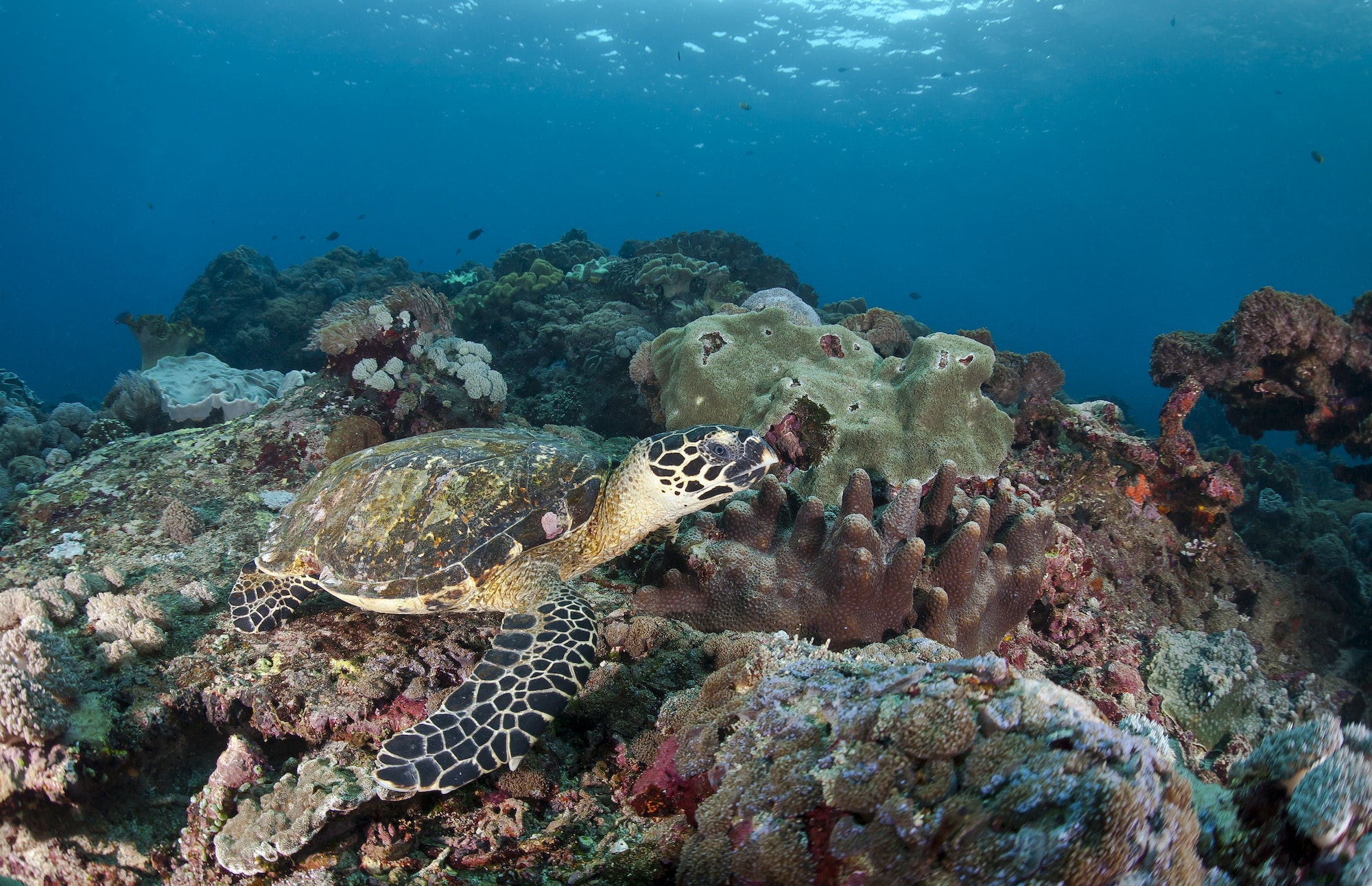

Dalam keputusan 15/4, pertemuan kelima belas Konferensi Para Pihak, yang diadakan dari 7 hingga 19 Desember 2022, di Montreal, Kanada, adopsi Rencana Strategis terkait keanekaragaman hayati diperbarui , termasuk Target Kerangka Kerja Keanekaragaman Hayati Global Kunming-Montreal (KM-GBF).
Kerangka Kerja Keanekaragaman Hayati Global Kunming-Montreal (KM-GBF) bertujuan untuk menerapkan tindakan yang dapat mengubah hubungan antara masyarakat dan keanekaragaman hayati pada tahun 2030. Hal ini sejalan dengan Agenda 2030 untuk Pembangunan Berkelanjutan dan tujuannya. Visi bersama untuk hidup harmonis dengan alam diharapkan tercapai pada tahun 2050.
Rencana ini memberikan kerangka kerja yang menyeluruh, tidak hanya untuk konvensi yang terkait dengan keanekaragaman hayati, tetapi untuk seluruh sistem Perserikatan Bangsa-Bangsa dan semua mitra lainnya yang terlibat dalam pengelolaan keanekaragaman hayati dan pembuat kebijakan.
GOAL A
The integrity, connectivity and resilience of all ecosystems are maintained, enhanced, or restored, substantially increasing the area of natural ecosystems by 2050;
Human induced extinction of known threatened species is halted, and, by 2050, the extinction rate and risk of all species are reduced tenfold and the abundance of native wild species is increased to healthy and resilient levels;
The genetic diversity within populations of wild and domesticated species, is maintained, safeguarding their adaptive potential.
GOAL B
Biodiversity is sustainably used and managed and nature’s contributions to people, including ecosystem functions and services, are valued, maintained and enhanced, with those currently in decline being restored, supporting the achievement of sustainable development for the benefit of present and future generations by 2050.
GOAL C
The monetary and non-monetary benefits from the utilization of genetic resources and digital sequence information on genetic resources, and of traditional knowledge associated with genetic resources, as applicable, are shared fairly and equitably, including, as appropriate with indigenous peoples and local communities, and substantially increased by 2050, while ensuring traditional knowledge associated with genetic resources is appropriately protected, thereby contributing to the conservation and sustainable use of biodiversity, in accordance with internationally agreed access and benefit-sharing instruments.
GOAL D
Adequate means of implementation, including financial resources, capacity-building, technical and scientific cooperation, and access to and transfer of technology to fully implement the Kunming-Montreal Global Biodiversity Framework are secured and equitably accessible to all Parties, especially developing country Parties, in particular the least developed countries and small island developing States, as well as countries with economies in transition, progressively closing the biodiversity finance gap of $700 billion per year, and aligning financial flows with the Kunming-Montreal Global Biodiversity Framework and the 2050 Vision for biodiversity.
TARGET 1
Ensure that all areas are under participatory, integrated and biodiversity inclusive spatial planning and/or effective management processes addressing land- and sea-use change, to bring the loss of areas of high biodiversity importance, including ecosystems of high ecological integrity, close to zero by 2030, while respecting the rights of indigenous peoples and local communities.
TARGET 2
Ensure that by 2030 at least 30 per cent of areas of degraded terrestrial, inland water, and marine and coastal ecosystems are under effective restoration, in order to enhance biodiversity and ecosystem functions and services, ecological integrity and connectivity.
TARGET 3
Ensure and enable that by 2030 at least 30 per cent of terrestrial and inland water areas, and of marine and coastal areas, especially areas of particular importance for biodiversity and ecosystem functions and services, are effectively conserved and managed through ecologically representative, well-connected and equitably governed systems of protected areas and other effective area-based conservation measures, recognizing indigenous and traditional territories, where applicable, and integrated into wider landscapes, seascapes and the ocean, while ensuring that any sustainable use, where appropriate in such areas, is fully consistent with conservation outcomes, recognizing and respecting the rights of indigenous peoples and local communities, including over their traditional territories.
TARGET 4
Ensure urgent management actions to halt human induced extinction of known threatened species and for the recovery and conservation of species, in particular threatened species, to significantly reduce extinction risk, as well as to maintain and restore the genetic diversity within and between populations of native, wild and domesticated species to maintain their adaptive potential, including through in situ and ex situ conservation and sustainable management practices, and effectively manage human-wildlife interactions to minimize human-wildlife conflict for coexistence.
TARGET 5
Ensure that the use, harvesting and trade of wild species is sustainable, safe and legal, preventing overexploitation, minimizing impacts on non-target species and ecosystems, and reducing the risk of pathogen spillover, applying the ecosystem approach, while respecting and protecting customary sustainable use by indigenous peoples and local communities.seascapes and the ocean, while ensuring that any sustainable use, where appropriate in such areas, is fully consistent with conservation outcomes, recognizing and respecting the rights of indigenous peoples and local communities, including over their traditional territories.
TARGET 6
Eliminate, minimize, reduce and or mitigate the impacts of invasive alien species on biodiversity and ecosystem services by identifying and managing pathways of the introduction of alien species, preventing the introduction and establishment of priority invasive alien species, reducing the rates of introduction and establishment of other known or potential invasive alien species by at least 50 per cent by 2030, and eradicating or controlling invasive alien species, especially in priority sites, such as islands.
TARGET 7
Reduce pollution risks and the negative impact of pollution from all sources by 2030, to levels that are not harmful to biodiversity and ecosystem functions and services, considering cumulative effects, including: (a) by reducing excess nutrients lost to the environment by at least half, including through more efficient nutrient cycling and use; (b) by reducing the overall risk from pesticides and highly hazardous chemicals by at least half, including through integrated pest management, based on science, taking into account food security and livelihoods; and (c) by preventing, reducing, and working towards eliminating plastic pollution.
TARGET 8
Minimize the impact of climate change and ocean acidification on biodiversity and increase its resilience through mitigation, adaptation, and disaster risk reduction actions, including through nature-based solution and/or ecosystem-based approaches, while minimizing negative and fostering positive impacts of climate action on biodiversity.



TARGET 9
Ensure that the management and use of wild species are sustainable, thereby providing social, economic and environmental benefits for people, especially those in vulnerable situations and those most dependent on biodiversity, including through sustainable biodiversity-based activities, products and services that enhance biodiversity, and protecting and encouraging customary sustainable use by indigenous peoples and local communities.
TARGET 10
Ensure that areas under agriculture, aquaculture, fisheries and forestry are managed sustainably, in particular through the sustainable use of biodiversity, including through a substantial increase of the application of biodiversity friendly practices, such as sustainable intensification, agroecological and other innovative approaches, contributing to the resilience and long-term efficiency and productivity of these production systems, and to food security, conserving and restoring biodiversity and maintaining nature’s contributions to people, including ecosystem functions and services.
TARGET 11
Restore, maintain and enhance nature’s contributions to people, including ecosystem functions and services, such as the regulation of air, water and climate, soil health, pollination and reduction of disease risk, as well as protection from natural hazards and disasters, through nature-based solutions and/or ecosystem-based approaches for the benefit of all people and nature.
TARGET 12
Significantly increase the area and quality, and connectivity of, access to, and benefits from green and blue spaces in urban and densely populated areas sustainably, by mainstreaming the conservation and sustainable use of biodiversity, and ensure biodiversity-inclusive urban planning, enhancing native biodiversity, ecological connectivity and integrity, and improving human health and well-being and connection to nature, and contributing to inclusive and sustainable urbanization and to the provision of ecosystem functions and services.



TARGET 13
Take effective legal, policy, administrative and capacity-building measures at all levels, as appropriate, to ensure the fair and equitable sharing of benefits that arise from the utilization of genetic resources and from digital sequence information on genetic resources, as well as traditional knowledge associated with genetic resources, and facilitating appropriate access to genetic resources, and by 2030, facilitating a significant increase of the benefits shared, in accordance with applicable international access and benefit-sharing instruments.



TARGET 14
Ensure the full integration of biodiversity and its multiple values into policies, regulations, planning and development processes, poverty eradication strategies, strategic environmental assessments, environmental impact assessments and, as appropriate, national accounting, within and across all levels of government and across all sectors, in particular those with significant impacts on biodiversity, progressively aligning all relevant public and private activities, and fiscal and financial flows with the goals and targets of this framework.
TARGET 15
Take legal, administrative or policy measures to encourage and enable business, and in particular to ensure that large and transnational companies and financial institutions:
(a) Regularly monitor, assess, and transparently disclose their risks, dependencies and impacts on biodiversity, including with requirements for all large as well as transnational companies and financial institutions along their operations, supply and value chains, and portfolios;
(b) Provide information needed to consumers to promote sustainable consumption patterns;
(c) Report on compliance with access and benefit-sharing regulations and measures, as applicable;
in order to progressively reduce negative impacts on biodiversity, increase positive impacts, reduce biodiversity-related risks to business and financial institutions, and promote actions to ensure sustainable patterns of production.
TARGET 16
Ensure that people are encouraged and enabled to make sustainable consumption choices, including by establishing supportive policy, legislative or regulatory frameworks, improving education and access to relevant and accurate information and alternatives, and by 2030, reduce the global footprint of consumption in an equitable manner, including through halving global food waste, significantly reducing overconsumption and substantially reducing waste generation, in order for all people to live well in harmony with Mother Earth.
TARGET 17
Establish, strengthen capacity for, and implement in all countries, biosafety measures as set out in Article 8(g) of the Convention on Biological Diversity and measures for the handling of biotechnology and distribution of its benefits as set out in Article 19 of the Convention.
TARGET 18
Identify by 2025, and eliminate, phase out or reform incentives, including subsidies, harmful for biodiversity, in a proportionate, just, fair, effective and equitable way, while substantially and progressively reducing them by at least $500 billion per year by 2030, starting with the most harmful incentives, and scale up positive incentives for the conservation and sustainable use of biodiversity.
Target 19
Substantially and progressively increase the level of financial resources from all sources, in an effective, timely and easily accessible manner, including domestic, international, public and private resources, in accordance with Article 20 of the Convention, to implement national biodiversity strategies and action plans, mobilizing at least $200 billion per year by 2030, including by:
(a) Increasing total biodiversity related international financial resources from developed countries, including official development assistance, and from countries that voluntarily assume obligations of developed country Parties, to developing countries, in particular the least developed countries and small island developing States, as well as countries with economies in transition, to at least $20 billion per year by 2025, and to at least $30 billion per year by 2030;
(b) Significantly increasing domestic resource mobilization, facilitated by the preparation and implementation of national biodiversity finance plans or similar instruments according to national needs, priorities and circumstances;
(c) Leveraging private finance, promoting blended finance, implementing strategies for raising new and additional resources, and encouraging the private sector to invest in biodiversity, including through impact funds and other instruments;
(d) Stimulating innovative schemes such as payment for ecosystem services, green bonds, biodiversity offsets and credits, and benefit-sharing mechanisms, with environmental and social safeguards;
(e) Optimizing co-benefits and synergies of finance targeting the biodiversity and climate crises;
(f) Enhancing the role of collective actions, including by indigenous peoples and local communities, Mother Earth centric actions13 and non-market-based approaches including community based natural resource management and civil society cooperation and solidarity aimed at the conservation of biodiversity;
(g) Enhancing the effectiveness, efficiency and transparency of resource provision and use;
Target 20
Strengthen capacity-building and development, access to and transfer of technology, and promote development of and access to innovation and technical and scientific cooperation, including through South-South, North-South and triangular cooperation, to meet the needs for effective implementation, particularly in developing countries, fostering joint technology development and joint scientific research programmes for the conservation and sustainable use of biodiversity and strengthening scientific research and monitoring capacities, commensurate with the ambition of the goals and targets of the Framework.
Target 21
Ensure that the best available data, information and knowledge are accessible to decision makers, practitioners and the public to guide effective and equitable governance, integrated and participatory management of biodiversity, and to strengthen communication, awareness-raising, education, monitoring, research and knowledge management and, also in this context, traditional knowledge, innovations, practices and technologies of indigenous peoples and local communities should only be accessed with their free, prior and informed consent,14 in accordance with national legislation.
Target 22
Ensure the full, equitable, inclusive, effective and gender-responsive representation and participation in decision-making, and access to justice and information related to biodiversity by indigenous peoples and local communities, respecting their cultures and their rights over lands, territories, resources, and traditional knowledge, as well as by women and girls, children and youth, and persons with disabilities and ensure the full protection of environmental human rights defenders.
Target 23
Ensure gender equality in the implementation of the Framework through a gender-responsive approach, where all women and girls have equal opportunity and capacity to contribute to the three objectives of the Convention, including by recognizing their equal rights and access to land and natural resources and their full, equitable, meaningful and informed participation and leadership at all levels of action, engagement, policy and decision-making related to biodiversity.


Copyright © 2023, All rights reserved. Present by Balai Kliring Kehati Indonesia





